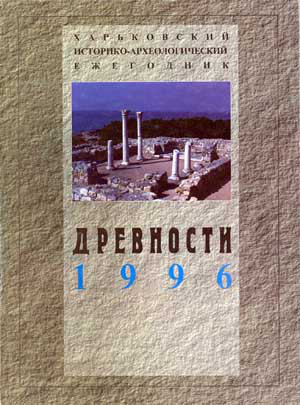Моливдовулы адресантов Херсона VII – IX вв. (новые находки)
Анотація
Summary
Alexeyenko N. A. Molivdovuls of Cherson Senders in VIII–IX cc. New Finds
The earliest among the pieces are two seals of VII cent. One of them belonged to Stephanos, patrikios and kommerkiarios of the apotheke of Abydos(?), is dated by 659-668. Another one concerns to the period, but just the owner's name – Theodore – Is saved.
The seals of IX-X cent, present us the correspondents from the Balkan to Asia Minor region. One more find of the seals Kosmas, who was hypatos and comes of Ieron (early IX cent.) is the certain acknowledgement for close relation of Cherson to that pert at Bosphorus, where the duty from boats followed into the Black Sea was taking. The seal of Paulos, apoeparhon and comes of Abydos (early IX cent.), is the evidence for long and close contact Cherson had with that one of the largest ports of the Marmara sea (Hellespontos). About the partnership in trade of Cherson and Abydos could be spoken as for as the beginning of XI century. One more seal inform us on it. It's the seal of Constantine, imperial spatharios and kommerkiarios of Abydos. It would be to the point also a new find of the wellknown seal belonged to John, chartoularios and genimatos of Chrisopoleos (XI cent.).
Among the new finds there are three seals of the chief militarian officers who was in capter of Byzantine provices. One of seals belonged, obviouslty, to Basil, imperial protospatharios and strategos of Ellados (X cent.); another- to John, imperial protospatharios, epi tou chrysotriklinou and strategos of Thessalonica (early XI cent.). New finds seals of strategos rice again a problem about the character of attitudes existed between these region of the empire during the period rather restless becouse of the foreign policy condition.
The last from published here seals belonged to Leo, imperial spatharios and taurmarche of Gothie (end of X – early XI cent.). It opens to us one else unknown page in the history of Byzantine Taurica, being the documentary confirming to the entry of that area into the structure of the Byzantine empire at the late X century.




